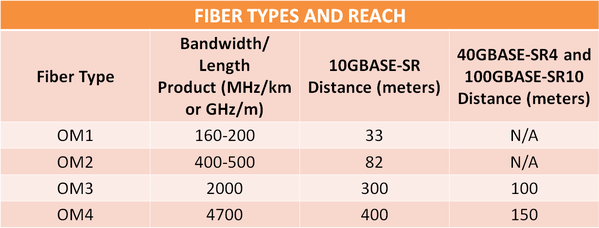Given the great popularity of optical communication lines in the past few years, most of them are currently based on modern single-mode fibers. However, both singlemode and multimode fibers come in many types and categories that conform to established standards and factory specifications. The article "Multimode and Singlemode Fiber Optic Cables" raises the main issues related to the difference between these types of optical fibers.
The specifications for the various types and categories of fibers are contained in developed international standards. In addition, numerous factory standards and specifications are used in local markets.
Terminology and classification
International Electrotechnical Commission Technical Committee 86 (IEC TC86) is responsible for international standardization in the field of fiber optic communications, which defined the following types of types: Multimode fibers, e.g. A1a, A1b, A1d ..., further divided into groups (e.g. A1a.1 ...)Singlemode fibers such as B1, B4, B6 ...However, the more popular labeling is based on name abbreviations:OM - optical multimodeOS - optical single mode. Examples: OM1, OM2, OM3, OM4, OS1, OS2. Specifications defining specific transmission parameters will be presented later in the text.
The OM designation has become widespread, in contrast to the OS marking. In the case of singlemode options, the more common names used by another international organization, the ITU (International Telecommunication Union), in particular the Telecommunications Standardization Unit (ITU-T). ITU-T guides are widely known and used. "Characteristics of transmission media and optical systems" are included in the G.600-G.699 standard, optical fibers are described in the G.650-G659 standard. Each recommendation is for a specific fiber type.

Selected standards and guidelines
Below is a summary of selected standards for fiber optics.ISO / IEC standards:OFL * - OverFilled Launch is a standardized method for measuring fiber bandwidth in which a source directs light evenly across all modes of a multimode fiber (LED source). EMB ** - Effective Modal Bandwidth - effective modal bandwidth of the center or offset (the laser source illuminates a small part of the fiber core).
It’s clear that the development of multimode fibers is moving towards fibers that can carry more and more data. OM1 delivers 10 Gbps data rates over very short distances (up to 33 meters), while OM4 allows 100 Gbps data rates up to 150 meters. However, given the current improvement in single-mode fiber, even OM3 and OM4 will rarely be used.
Such a large number of documents is the result of the rapid development of fiber optic communications due to the high demand for fast and long-distance data transmission types. Today, singlemode fiber is generally cheaper than multimode fiber. The future belongs to such fibers, and some exceptions may only exist in local systems, because devices that work with single-mode optical fibers are slightly more expensive. ITU-T Recommendations are much more stringent (or precise) than the transmission performance categories defined by the IEC (OS1 and OS2). For example, the specifications required by OS2 are met by G.652.C fiber, which means that the G.652D fiber type has the best performance.
G.652.D is the most commonly used fiber in modern systems because of its versatility and cost. Some standards, such as G.653, quickly fell out of use due to the cost of use and limitations of the physical properties of the fiber. If you are faced with a choice of where to buy fiber optic cable, choose a reliable supplier.

